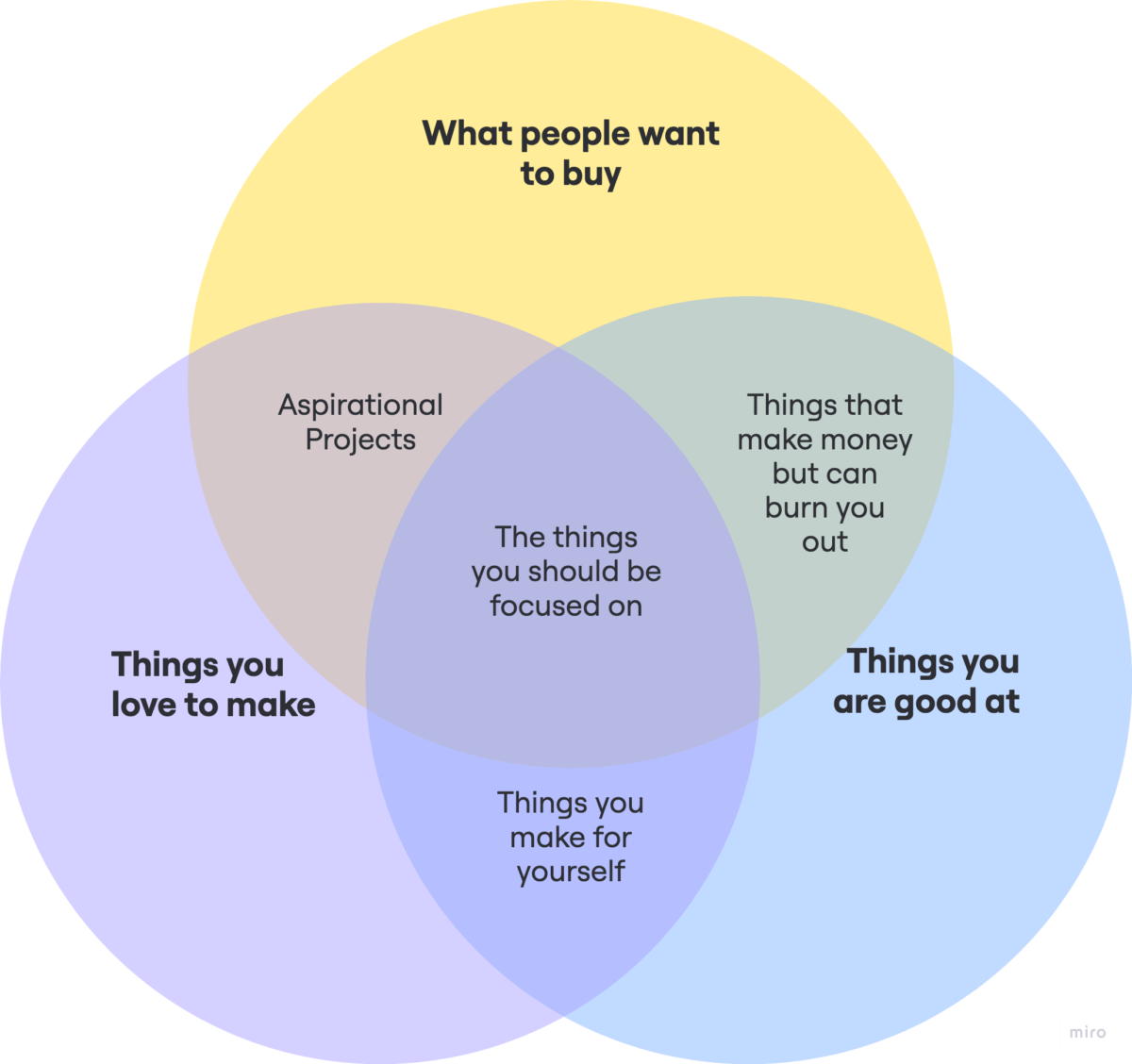
As a new artist trying to sell your work, it can be tough to match what you make with what people want to buy. You will get a lot of unsolicited advice from people as you go to different markets, socialize with people, and post online. You may ask yourself “How do I make a decision based on all this feedback about what I should be making?” Let me take you through the steps:
The Big Three
There are three things to consider when deciding what to create: What do people want to buy, what are you good at, and what do you love to make. Starting out you may not know the answers to the first two, but you probably have a good idea about what you want to make. So that is where you start. Here’s the rub; the things that you love to make may not sell great initially. You have to test the market with things. The most important thing to remember is that not immediately connecting with your audience isn’t a bad thing. Pay attention to what people are saying they like/don’t like about your work so that when you can start answering that question about “what people want to buy”. Pay attention to which items do sell and consider making more of those.
You also need to try to answer that third question: Things you are good at. There are a few ways to do this. It can be hard to sometimes to have an unbiased critical eye on your own work so seek advice from others. Ask friends and family. Post online to FB groups, Instagram, and Reddit and ask for others’ opinions of your work. Ask people at markets. Sometimes I’ll have two versions of the same piece that is each slightly different and I’ll ask customers which they like better. Be warned; if you post online, be prepared for honest criticism. If you cannot take harsh critiques or aren’t used to receiving negative feedback you should brace yourself when posting your work online because honesty can sometimes be hard to hear and some people can be downright rude. Just remember that your work is not a reflection of who you are and, with criticism, you can only improve.
Narrowing your scope
Now that you are starting to get to know the big three it is time to start segmenting those into different categories of work. I am going to break these down individually:
- Aspirational Projects These are the things that you love to make and people want to buy but you haven’t mastered the skills yet to create them. For me, these are photo-realistic portraits. I get asked for them all the time, I would love to make them (especially pet portraits) but I don’t feel my skills are there to quite do these pieces justice. I aspire to be good at this and one day I will but, until then, they are out of my wheelhouse.
- Things that make money but can burn you out These are those projects that you have made that everyone loves, you have perfected the skill of creating them, but you just aren’t passionate about doing them. I had a lot of success with coasters early on. I made dozens of coaster sets and, eventually, got sick of them. They sold well so I kept making them but eventually, I got burnt out. So I raised my price on them so, if people really want them, they can still buy them but I don’t find myself making them as frequently which means I am less likely to be frustrated when an order comes in for them.
- Things that you make for yourself There are going to be those things that you make, that you love, and that look fantastic but never seem to sell. This can be because they only suit your particular taste or because they just don’t have the broad appeal of some other things. That doesn’t mean you shouldn’t do those things. You do what you do because you love it. If these projects bring you joy then make them, hang them up in your house, and share them with your loved ones. Not every piece is going to sell and that is ok. It is about keeping your passion alive and, if you can do that by making the occasional piece for yourself, c’est la vie
The Sweet Spot
Obviously, as time goes on you’ll start to find that sweet spot. The place where all three converge: Things people what, that you love to make, and that you are good at. Me, when I realized how much people loved my florals, it occurred to me that I found something special. Something that makes me happy, that I have honed my skills at, and that people absolutely adore. Once you find that, try your best to capitalize on that. Make large statement pieces to draw customers in, make small affordable pieces to get those volume sales, and make mid-size pieces for those people who want some beautiful wall art but can’t afford the big statement piece prices.
Remember, finding that sweet spot isn’t going to happen overnight. It takes time to hone in on each one of these categories. If you listen to our podcast, PyroToastyTalks, you’ve heard Renee and I talk about this in “How to Stay in Love with Your Art”. Take your time, have fun doing it, and make sure you are constantly learning and adapting along the way. Have you found your sweet spot? Let us know and tag us @bz_furfur and, as always, stay unique.



